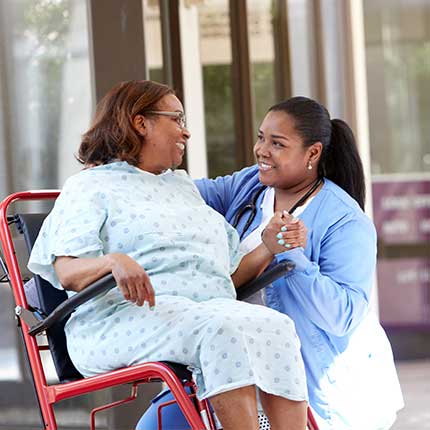Healthy Living: Orthopedics
Five Painful Causes of Hamstring Injury
Enjoying a morning run or playing sports in the park seems innocent enough. However, a pulled hamstring muscle can ruin your day, causing pain to your leg and your knee. A pulled hamstring is an injury to one or more of the muscles at the back of the thigh. Although predominantly common in athletes, if you’re an active person who likes the outdoors, read on to stay prepared and prevent injury.
What is your hamstring?
The hamstring starts at the bottom of the pelvis and lines the back of the knee joint and ends at the lower leg. Hamstring muscle fibers join with the tough, connective tissue of the hamstring tendons near the points where the tendons attach to bones.
How do hamstring muscles get injured?
A hamstring strain can be a pull, a partial tear, or a complete tear. Muscle strains are graded according to their severity. A mild strain usually heals readily, while the more severe hamstring injuries may result in an avulsion injury, requiring immediate care.
Five common causes of hamstring injuries:
- Muscle overload - happens when the muscle is stretched beyond its capacity and is strained with a sudden load.
- Hamstring muscle strains - when you extend a muscle while it is weighted, such as at the gym.
- Muscle tightness - skipping out on daily stretching exercises can leave your muscles tight and more susceptible to injury.
- Muscle imbalance - during high-speed activities, the hamstring may become fatigued and can lead to a strain.
- Poor conditioning - weak muscles are less able to cope with the stress of exercise and are more likely to be injured.
What are the symptoms of hamstring injuries?
If you strain your hamstring, you may notice a sudden, sharp pain in the back of your thigh. It will cause you to come to a quick stop. Additional symptoms may include:
- Swelling
- Bruising or discoloration of the back of your leg below the knee
- Weakness in your hamstring
How are hamstrings related to knee pain?
The hamstring muscle group helps you extend your leg straight and bend your knee. Because they are so closely intertwined, mobility in your knees can also be compromised when you are suffering from a hamstring injury.
What you can do to prevent injury
Prevention is the best cure, and although accidents might still happen, these important tips can help you avoid hamstring injuries:
- Regular, consistent exercise.
- Stretching before and after a rigorous sports activity.
- Bending your knees when carrying and being careful with heavy load.
How to treat hamstring injuries
The first goal of treatment is to prevent injuries from becoming worse. If you or someone you know is suffering from a mild hamstring injury, following these home management strategies will do wonders:
- Get ample rest, ice your injury regularly, keep light pressure on it (such as with a compression sleeve), and keep your injured leg elevated. These will help reduce pain, inflammation, and swelling. Remember R-I-C-E: rest, ice, compression, elevation.
- Gently massage the afflicted area to ease pain and muscle tension.
- Move around a bit to get the blood flowing and speed up the healing process. Sitting for long periods of time and being sedentary slows down the recovery process.
- Take anti-inflammatory medications to help manage pain and swelling.
- Do gentle stretching exercises to encourage blood flow to the tendon.
When to See a Doctor for Sports Injuries
Don’t delay seeking medical help when you have an emergency. Go to the doctor right away if your injury causes extreme swelling, bruising, or pain.
Sources:
American Academy of Orthopedic Surgeons
Medical News Today


